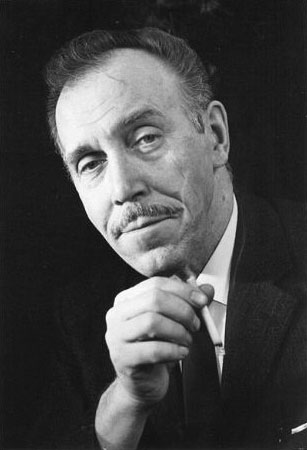In honor of Pride Month, we are pleased to launch an ongoing column devoted to LGBTQ art & culture, beginning with a celebration of artist Touko Laaksonen
May 8 marked the 100th anniversary of Touko Laaksonen’s birth in the rural town of Kaarina, Finland, near the city of Turku. Known by his artist name, “Tom of Finland,” he was a gifted — if controversial — artist whose eroticized depictions of gay men, fueled by his own illicit experiences as a solider patrolling the Eastern Front during World War II, inspired numerous generations of LGBTQ constituents and served as an important (if inadvertent) herald for the gay rights movement.
In an era (and country) that shunned homosexuality, Tom’s drawings, never more than a private passion outside of his employment as a commercial artist, were strikingly detailed tableaux brimming with energy and chiaroscuro that garnered a fervent underground following. As art historian Micha Ramakers notes, despite a lack of formal artistic training, Tom drew heavy inspiration from the realistic styles of Renaissance and Baroque artists, as well as more contemporary muses such as the American artist Paul Cadmus, whose work, not unlike his own, was once deemed too salacious and profane.
Intrigued by the nascent rise of gay subcultures across western Europe, Tom traveled extensively throughout the 1950s, at one point falling prey to the theft of what he described as “several hundred” drawings and his passport while living in Berlin. (Tom would later recall that, during a visit to Belgium, a friend invited him to an exhibit featuring the very same drawings stolen some 30 years prior.)
Suffice it to say, the rest of the decade saw significant global interest in Tom’s work, including in London and Los Angeles, where American filmmaker and publisher Bob Mizer first introduced his readers to Tom’s art on the cover of Physique Pictorial (Spring 1957) under the pseudonym “Tom of Finland.” Throughout the 1960s and 1970s, Tom and Mizer would embark upon a commercial partnership that saw nearly 100 drawings grace the pages of Mizer’s publications, in addition to numerous contributions to various Danish, Swedish and British underground magazines.
Creating positive images of masculinity
Tom of Finland never fancied himself a highbrow artist or member of the cognoscenti. His aesthetic, not unlike that of Andy Warhol, straddled the boundaries between art and pornography, and he repeatedly noted that his motivation for creating such subjects was “lower than art,” citing an innate desire to create “positive images” of masculinity that ran counter to hegemonic constructs of more effete (because queer) gender performance.
Tom’s oeuvre explicitly undermines homophobic, heteronormative tropes of masculinity found within images of police officers, military personnel, cowboys, or lumberjacks. His subjects, as a 2013 exhibit at the Museum of Contemporary Art in Los Angeles explained, are recast as “unapologetic, self-aware, and boastfully proud” of their sexual proclivities — postures imbued with poignant historicity thanks to the outbreak of HIV and AIDS in the 1980s. Toward the end of his career, Tom turned his attention toward black male subjects, a community conspicuously absent in his early works. To date, he is credited with helping increase the visibility of black gay male subjectivity throughout the final quarter of the 20th century. Critics point to this artistic period as his most overtly political statement on race.
Touko Laaksonen passed away in Helsinki from an emphysema-induced stroke on Nov. 7, 1991 at the age of 71. An artist who stepped out of the shadows of censorship to become one of the most important icons of post-war LGBTQ culture, Tom’s work is now widely praised thanks to the creation and preservation efforts of the Tom of Finland Foundation in 1984, and highlighted by historic acquisitions by the Finnish Museum of Contemporary Art Kiasma in 1991; the Los Angeles County Museum of Art and San Francisco Museum of Modern Art in 1997; and New York’s Museum of Modern Art in 2005.
In 2014, much to the delight of the Finnish postal service, Tom of Finland commemorative stamps were released to the general public and quickly became the country’s highest-selling stamps ever, with orders pouring in from 178 countries. And earlier this year, the House of Illustration in London announced the United Kingdom’s first-ever public Tom of Finland exhibition, currently set to close this September.
He is survived by his partner, Tom of Finland Foundation co-founder and president, Durk Dehner.







